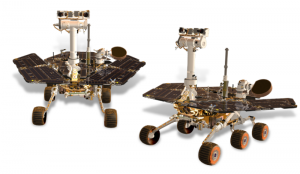by NREL, via Energy Post

Solar cells commonly used in spacecraft are highly efficient but too expensive to be used commercially down here on Earth. Two methods, HVPE (hydride vapour phase epitaxy) and the preferred MOVPE (metalorganic chemical vapour phase epitaxy), have been used to make these super-cells, reaching efficiencies of 29.1%. The National Renewable Energy Laboratory (NREL) says its scientists have discovered a method, D-HVPE, that should achieve those efficiencies much more cheaply. They have found a new technique to create a surface – using aluminium indium phosphide (AlInP) – that maximises transparency to allow sunlight to reach the absorber layer below where the photons are converted to electricity. The result is a single-junction solar cell that can be made in under a minute by D-HVPE, something that takes over an hour using MOVPE.
Scientists at the National Renewable Energy Laboratory (NREL) achieved a technological breakthrough for solar cells previously thought impossible.
The scientists successfully integrated an aluminium source into their hydride vapour phase epitaxy (HVPE) reactor, then demonstrated the growth of the semiconductors aluminium indium phosphide (AlInP) and aluminium gallium indium phosphide (AlGaInP) for the first time by this technique.